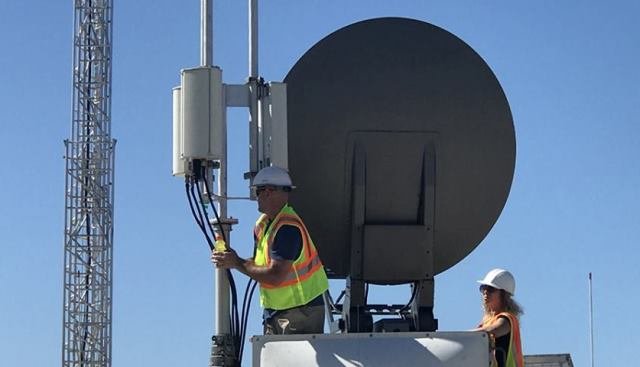Demand for 5G is burgeoning. An upgraded version of 4G network, 5G is far better than 4G and is faster, wider, and reliable.

As per the research by Telegeography, a total of 114 5G commercial networks out of which 30 networks in Q2, 2020 have been made live around the worldwide and is anticipated to increase by 2-fold i.e. 2014 by the end of 2020. The demand for data has scaled up and so is the urgency for deployment of 5G networks.
Though 5G has a lot of advantages than its previous versions, the process of 5G deployment is not so simple and easy task.
Operators face critical challenges in 5G deployment
Mobile network operators (MNOs) deal with various issues that prevail with the 5G implementation as mentioned below:
#1 Spectrum availability and implementation issues
5G networks operate on higher frequencies nearly up to 300GHz and these bands have increased capacity capable of delivering ultra-fast speeds 20 times more than LTE networks theoretical speed. However, availability and cost of spectrum band is still an issue for the operators. They need to bid for these higher spectrum bands as they continue to build and deploy 5G wireless networks.
#2 Deploying hybrid LTE-NR is critical
The initial phase of 5G deployments are based on non-standalone 5G which uses LTE core and LTE access is the anchor for New Radio (NR). Control and excess user traffic above LTE traffic are administered by LTE eNB and 5G gNB. Configuration of hybrid LTE-NR using the macro LTE layer is beneficial for the deployment of 5G in mmW spectrum and increases its mobility in between the hotspots. This mobility gained from mmW works well at low speeds. Nevertheless, these benefits are evolved from the performance of the dual connectivity (EN-DC) and is very challenging to perform 5G network testing due to its complex nature. It requires synchronisation between gNB and eNB for data transfer and signalling to the NR.
#3 Complex network architecture
In order to ensure 5G deployment successfully in both the core and RAN network, it is critical to develop IT related architecture and platforms to support it. 5G wireless architecture is not so simple as it seems. Feature-rich structure makes it more intricated than ever and handling such network require experienced staff with good knowledge on the technology.
#4 Demand for extensive 5G networks testing
With massive bandwidth in 5G technology, it demands for denser fibre for front-haul, mid-haul and back-haul network. Fibre backhaul is an important part for delivering excellent network performance and experience. Three UK recently collaborated with Colt Technology for connectivity of fibre backhaul as a part of network transformation. This technology will complement the latest upgrades implemented on over 4k sites with improved 4G LTE networks, fully virtualized core networks, and 20 newly designed data centers and 5G networks in over 100 locations. This increases the volume of fiber cables and end points used with a greater need for multiplexing (WDM) and ultimately scaling the complexity of fiber testing. Telecom operators need to test for the correct power levels and require various sets of instruments present in a WDM system.
#5 Scarcity in 5G devices
There is still limited number of 5G phones vs non-5G phones in the market. 5G deployments scheduling are determined by the availability of 5G devices which is very less in number. This is due to various technical challenges comprising multi-band support of frequency bands in upper and lower range poses design challenges for frontend. It also has heating issues due to high power consumption in order to transmit high frequency bands and a significant effect of performance for higher bandwidths and data rates.
#6 Investment requirements
Though 5G has its own set of advantages, 5G deployment is a real huge investment. Operators are addressing these challenges of 5G infrastructure that includes cables, cell towers, etc. by dividing it into phase-by-phase deployment as they continue to implement these on the site. The other burden for telcos is the cost of 5G test equipment required for extensive 5G drive test analysis such as cell site verification and assessment of user KPIs like speed test, voice and call test, HTTP test, and many more before making it available for the commercial users. In 2019, Gartner estimated 5G NR network infrastructure investments to be accounted to 6 percent of the total revenue of wireless infrastructure of network providers and is expected to double the value in 2020.
#7 Regulations on radiation
Regulators develop regulatory standards to ensure that mobile network operators build networks to serve people across the country, covering the rural areas. Some European countries have enforced tight regulations on radiation that led 5G trials to come at a halt. Brussels located one mobile operator planned to run 5G trials and offer 5G services commercially. But government restricted it from conducting trials as there is no way to guarantee that the output of the radiation will remain within the range that is allowed. Hence, no trials till these changes are amended.
Conclusion
MNOs are in full force to fasten up the deployment of 5G networks on a wide geographical area. The key to be at the forefront of 5G deployment race that satisfies high bandwidth and increased cell density demands in the upcoming years is to have a future proof 5G infrastructure and be prepared in order to deliver agile and flexible wireless networking technology. To meet these requirements, a structured list of strategies with right 5G testing solutions can pave the way for operators to undertake their tasks in an organized manner and accomplish it successfully.
By Sreenivas Midatala, director / Wireless Telecom Consulting RantCell product director.
Linkedin profile- https://www.linkedin.com/in/sreenivas-midatala-36876b1/
